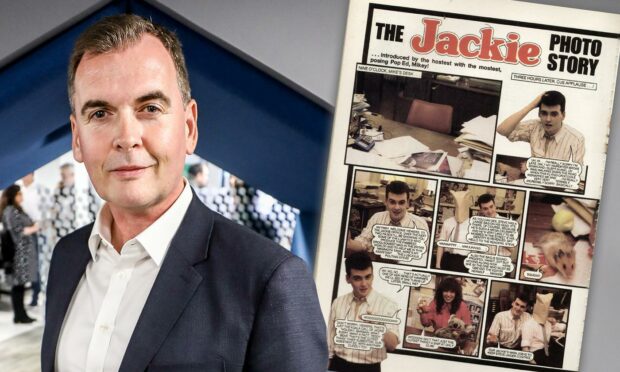Curtis Stigers’ new album, This Life, is a distillation of the singer, songwriter, saxophonist and guitarist’s career over the past 30 years.
It doesn’t tell the whole story because it would take more than 11 songs to do that.
There was his spell as a long-haired, blue-eyed soul singer, with hits including Never Saw A Miracle and I Wonder Why, before Stigers became a critically-acclaimed jazz artist.
He also made early attempts at being a punk rock drummer and emulating Jimmy Page of Led Zeppelin before he encountered his hometown mentor, Blue Note Records piano legend Gene Harris.
Pop heartthrob to serious musician
Harris’ influence, along with that of another hero, the hipster jazz singer Mark Murphy and Frank Sinatra might be the reason – or one of them – for Stigers’ relatively smooth progress from pop heartthrob to serious musician.
Although you won’t find him taking himself too seriously.
It was Murphy, says Stigers, who told him to stop trying to sound like his heroes.
He’d been through an Elton John phase, tried to sing like Ray Charles and Sarah Vaughan, and studied the storytellers – Sinatra and Blossom Dearie.
“Mark Murphy told me I sounded too much like him and he was probably right,” says Stigers, who appears at Perth Concert Hall on Wednesday March 16.
“It’s not good to sound like someone else but really, I sound like everyone else! They’re just all mixed in together.”
Blues and soul saxophone
Stigers was 21 when he left Boise for New York in 1987. He’d gained experience playing blues and soul saxophone in clubs around Idaho and learned valuable lessons in blues-driven swing in the jam sessions he took part in with Harris.
They later recorded together with organ hero Brother Jack McDuff to underline Stigers’ jazz credentials.
In New York Stigers first found work as a saxophonist in blues clubs, then took up residence on Sunday nights in a restaurant where he and his trio created jazz versions of songs by Elvis Costello, Tom Waits and Donald Fagen.
Word got around about this stylish young singer and music industry mogul Clive Davis signed Stigers to his Arista Records label, home to Aretha Franklin, Dionne Warwick and Whitney Houston.
Davis put Stigers to work on material for his first album with major songwriters including Glen Ballard, who worked on Michael Jackson’s Thriller, and Barry Mann, who co-wrote You’ve Lost That Lovin’ Feeling among dozens of other hits.
That first album was a hit and Stigers’ version of Nick Lowe’s What’s So Funny About Peace Love and Understanding for The Bodyguard, starring label mate Whitney Houston, took Stigers into millions more homes.
Arista wanted Stigers to continue as a smooth pop-soul singer but he was moving in a rootsier direction.
His second album sold disappointingly, as did his third, and following a long talk with his friend, the great saxophonist Michael Brecker, Stigers decided to leave the search for pop hits and follow his heart back into jazz.
As with the material he sang with his trio on his Sunday residency, the songs Stigers developed into jazz numbers came from writers not normally associated with jazz.
Randy Newman, Annie Lennox and country songwriters Merle Haggard Willie Nelson and Hayes Carll joined writers of standards such as George Gershwin, Jerome Kern and Cole Porter in Stigers’ track running orders and setlists as he built a reputation touring the world as a singer-saxophonist.
Blues and soul traditions
“I’m a saxophonist rather than a jazz saxophonist,” he says. “I’m more from the blues and soul traditions than jazz and as I’ve gotten older, I think my playing has changed in a similar way to my singing.
“I can still reach the high notes vocally that I used to do but it’s become more difficult. So I sing some songs in a lower key, more conversationally, and the saxophone parts have followed suit.”
He’s constantly surprised and delighted by his fans’ willingness to follow him down unexpected roads and their loyalty appears to have stayed with him from his early hits, which he still sings but in new arrangements.
“Over the years, fans I’ve met after shows have asked me for new recordings of these rearranged versions of my old songs,” he says. “So it was good to be able to give them these songs, along with some of my own favourites, on this new album.”












